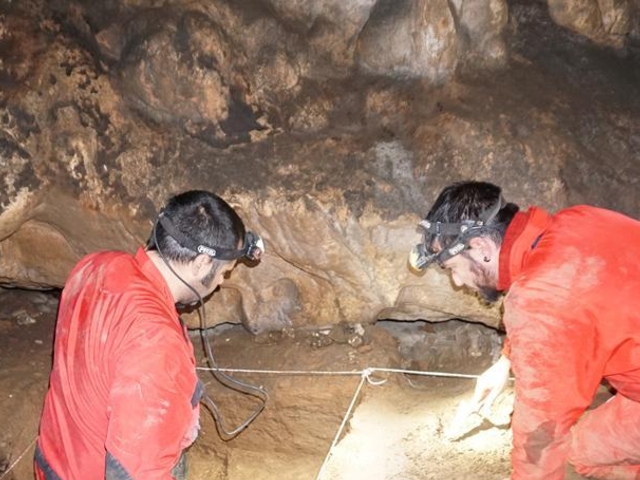
(by Stefano Giantin) (ANSA) - BELGRADE, 12 APR - The University of Southampton has announced an important archeological discovery in the Balkan peninsula. A team of archeologists has revealed the first example of Palaeolithic figurative cave art ever found in the region. Some red marks on the walls of the cave 'Romualdova Pecina', in the Croatian part of the Istrian peninsula, were noticed back in 2010. Subsequently, an international team, led by Aitor Ruiz-Redondo, an archaeologist from the University of Southampton and the University of Bordeaux, conducted researches at the site since 2017. The team managed to identify "several figurative paintings, including a bison, an ibex and two possible anthropomorphic figures, confirming the Palaeolithic age of the artworks," the University of Southampton said in a statement. During the excavations at the cave, researchers found also a number of Palaeolithic age remains, including a flint tool, an ochre crayon and fragments of charcoal. Radiocarbon dating of the objects found at the Romualdova Pecina' show an estimated age of around 17,000 years, but other data suggest the paintings date at around 34,000-31,000 years ago, the University said. The findings of the team led by Ruiz-Redondo are published in the in the journal Antiquity. "It is the first Palaeolithic figurative art in fact" discovered in the Balkans, Ruiz-Redondo told ANSA, recalling that the researches about the rock art of the cave started after Darko Komso (Director of the Archaeological Museum of Istria), that led researches at the site together with Ivor Jankovic (Croatian Institute for Anthropological Research), noticed some red color marks in a deep part of the cave in 2010, while "the bison and the other figures were identified during our project in the cave, in 2017." The discovery was compared by local media in the Balkans to the one of the caves of Altamira, in Spain. However, for Ruiz-Redondo the two sites can't be compared. Altamira, he said to ANSA, "was unique in its time because was the first time in the world that Palaeolithic cave art was identified. The discovery started a scientific debate that led to the recognition of the existence of this phenomenon. And no discovery in Palaeolithic art can be compared to the significance of Altamira, now or in the future." However, he added, "the discovery of Romualdova is really important, because it opens a new area for Palaeolithic cave art and calls to us, as researchers, to pay attention on traditionally neglected areas as the Balkans." (ANSA).
